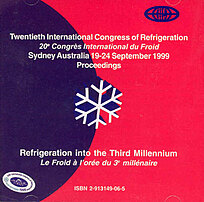
Summary
Several physical stresses kill cells at low temperatures. Intracellular ice is almost always fatal, so survival of freezing temperatures involves combinations of dehydration, freezing point depression, supercooling and intracellular vitrification. Artificial cryopreservation achieves intracellular vitrification with rapid cooling, added cryoprotectants and modest osmotic contraction. High warming rates are required to avoid crystallization during warming. In the natural environment, cooling is much slower and temperatures less cold, but environmental freezing damage is important ecologically and agronomically. For modest sub-freezing temperatures, supercooling sometimes osmotic contractions. This contraction concentrates solutes and thus assists vitrification, but is not necessarily reversible. The rapid osmotic expansion during thawing may rupture membranes. Further, membranes and other ultrastructural elements may be damaged by the large, anisotropic mechanical stresses produced when their surfaces interact via hydration forces. Solutes reduce these stresses by osmotic, volumetric and other effects.
Available documents
Format PDF
Available
Public price
20 €
Member price*
Free
* Best rate depending on membership category (see the detailed benefits of individual and corporate memberships).
Details
- Original title: Physical stresses in cells at low temperatures.
- Record ID : 2000-1620
- Languages: English
- Source: 20th International Congress of Refrigeration: Refrigeration into the Third Millennium.
- Publication date: 1999/09/19
Links
See other articles from the proceedings (447)
See the conference proceedings
Indexing
- Themes: The influence of refrigeration on cells, tissues and organs
- Keywords: Vitrification; Cryobiology; Cell; Deterioration; Membrane; Freezing
-
Low- and high-temperature vitrification of livi...
- Author(s) : KATKOV I. I.
- Date : 2004/04/27
- Languages : English
- Source: Cryogenics 2004. Proceedings of the 8th Cryogenics Conference
- Formats : PDF
View record
-
MOLECULAR AND INTRACELLULAR MECHANISMS OF MEMBR...
- Author(s) : BELOUS A. M.
- Date : 1987/08/02
- Languages : Russian
View record
-
MEMBRANE LIPID PHASE SEPARATIONS AT LOW TEMPERA...
- Author(s) : QUINN P. J.
- Date : 1989/07/06
- Languages : English
View record
-
LIPID PHASE SEPARATIONS IN BIOLOGICAL MEMBRANES...
- Author(s) : QUINN P. J.
- Date : 1987/08/02
- Languages : English
View record
-
AN INVESTIGATION OF THE HISTOPATHOLOGICAL AND E...
- Author(s) : FENG S., XIAO B., LI Q.
- Date : 1989/10/11
- Languages : English
View record
